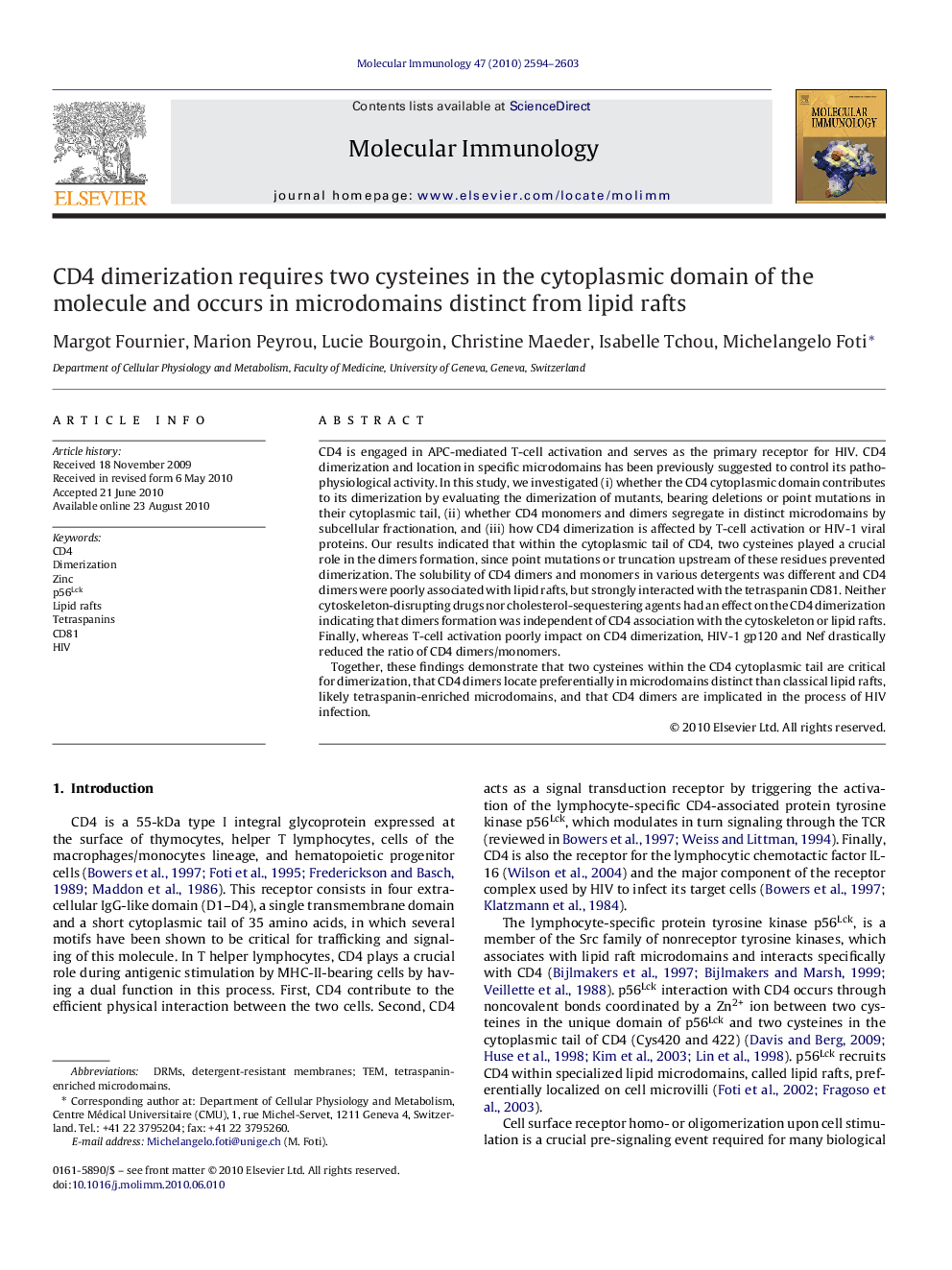| کد مقاله | کد نشریه | سال انتشار | مقاله انگلیسی | نسخه تمام متن |
|---|---|---|---|---|
| 2831315 | 1163796 | 2010 | 10 صفحه PDF | دانلود رایگان |

CD4 is engaged in APC-mediated T-cell activation and serves as the primary receptor for HIV. CD4 dimerization and location in specific microdomains has been previously suggested to control its pathophysiological activity. In this study, we investigated (i) whether the CD4 cytoplasmic domain contributes to its dimerization by evaluating the dimerization of mutants, bearing deletions or point mutations in their cytoplasmic tail, (ii) whether CD4 monomers and dimers segregate in distinct microdomains by subcellular fractionation, and (iii) how CD4 dimerization is affected by T-cell activation or HIV-1 viral proteins. Our results indicated that within the cytoplasmic tail of CD4, two cysteines played a crucial role in the dimers formation, since point mutations or truncation upstream of these residues prevented dimerization. The solubility of CD4 dimers and monomers in various detergents was different and CD4 dimers were poorly associated with lipid rafts, but strongly interacted with the tetraspanin CD81. Neither cytoskeleton-disrupting drugs nor cholesterol-sequestering agents had an effect on the CD4 dimerization indicating that dimers formation was independent of CD4 association with the cytoskeleton or lipid rafts. Finally, whereas T-cell activation poorly impact on CD4 dimerization, HIV-1 gp120 and Nef drastically reduced the ratio of CD4 dimers/monomers.Together, these findings demonstrate that two cysteines within the CD4 cytoplasmic tail are critical for dimerization, that CD4 dimers locate preferentially in microdomains distinct than classical lipid rafts, likely tetraspanin-enriched microdomains, and that CD4 dimers are implicated in the process of HIV infection.
Journal: Molecular Immunology - Volume 47, Issue 16, October 2010, Pages 2594–2603